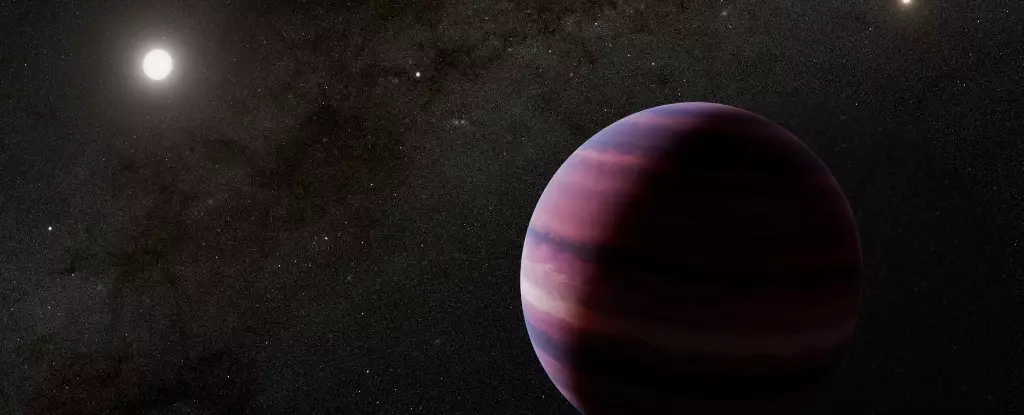The universe continually beckons humanity with mysteries that challenge our understanding of planetary formation and habitability. The recent hints of a giant exoplanet nestled within the Alpha Centauri system—our closest stellar neighbor—represent a bold step forward in this quest. This potential discovery, derived from cutting-edge observations made by the James Webb Space Telescope, ignites both excitement and skepticism among astronomers, as it could redefine the limits of planetary science and the search for life beyond Earth.
Traditionally, the hunt for alien worlds has relied on indirect methods—detecting minute fluctuations in starlight or gravitational tugs—that, while effective, leave much to interpretation. The direct imaging of Alpha Centauri Ab, if confirmed, would mark a paradigm shift. It would mean capturing a distant world with enough clarity to analyze its characteristics directly, a feat that until now has remained elusive due to the brightness, proximity, and motion of nearby stars. Successfully doing so around Alpha Centauri—just four light-years away—would not only be a technological triumph but a poignant moment for humanity, bringing us tantalizingly close to understanding what other Earth-like systems might exist.
The potential of finding a planet in the habitable zone of Alpha Centauri A—the Sun’s closest analog—stokes optimism. This zone is crucial; it’s the sweet spot where liquid water could persist on a planet’s surface, an essential ingredient for life as we comprehend it. The prospect that Alpha Centauri Ab might be a gas giant orbiting at just the right distance raises complex questions about its capacity to harbor life, but it also opens the door to considering moons that could be hospitable. This broadening of perspective underscores that habitability need not be limited to rocky planets alone; moons of gas giants could be the true cradles of life in such systems.
However, the story is far from straightforward. The observations from JWST in 2024 suggested the presence of a faint point source near Alpha Centauri A, but subsequent images failed to confirm this object. Such a disappearance might seem frustrating or even implausible, yet it highlights the challenges faced in high-stakes exoplanet detection. Variables such as stellar brightness, orbital dynamics, and observational limitations may obscure or simulate planetary signals, demanding rigorous analysis and repeated observations. The ambiguity underscores the delicate balance between hope and skepticism in scientific discovery: preliminary signs can be compelling but must be validated against the complex cosmic environment.
While the possibility of Alpha Centauri Ab as a gas giant orbiting within the habitable zone is intriguing, it complicates the narrative of habitable worlds. Gas giants themselves are inhospitable as direct hosts—lacking solid surfaces and likely hostile atmospheres—but their moons could offer refuge. Imagine a moon bathed in stellar warmth, warmed yet shielded from the chaos of the system’s gravitational tumult. Such a scenario extends the horizon of habitability beyond the traditional confines, emphasizing that the search should also focus on satellites and secondary worlds orbiting these giants.
Moreover, the formation of such a planet within the chaotic environment of a binary star system pushes the boundaries of our understanding of planetary genesis. The gravitational dance between Alpha Centauri A and B would create a tumultuous environment, challenging existing models of planet formation and survival. If the existence of Alpha Centauri Ab is confirmed, it would compel astronomers to rethink how planets can form, migrate, and endure in such turbulent settings. This realization would have profound implications—not just for the Alpha Centauri system but for the myriad multi-star systems scattered across the galaxy.
Despite the uncertainties, the excitement surrounding this potential discovery is justified. It exemplifies the relentless human drive to push beyond known horizons, leveraging unprecedented technology to glimpse worlds that, until recently, existed solely in theory or science fiction. The ongoing investigation into Alpha Centauri Ab encapsulates the blend of optimism, skepticism, and relentless curiosity that drives astronomy forward. Whether the planet is real or a transient illusion, the pursuit itself enriches our understanding of the cosmos and our place within it.
In the final analysis, the alpha Centauri system may serve as a vital proving ground—testing the limits of our observational capabilities and theories of planetary science. The possibility of a habitable or at least potentially habitable world orbiting our nearest stellar neighbor could inspire future missions, detailed studies, and perhaps eventual exploration. But as with all significant scientific breakthroughs, patience, rigor, and a critical eye will be necessary to distinguish promising discovery from cosmic mirage. We stand on the cusp of potentially rewriting what we know about planetary habitability, but until then, the universe continues to mystery and challenge us in equal measure.

